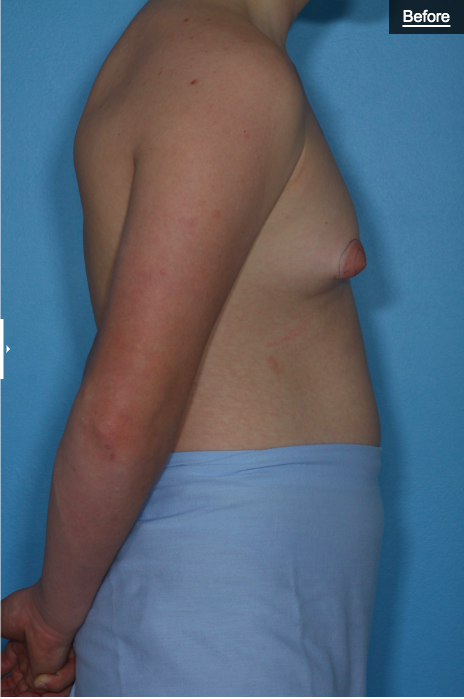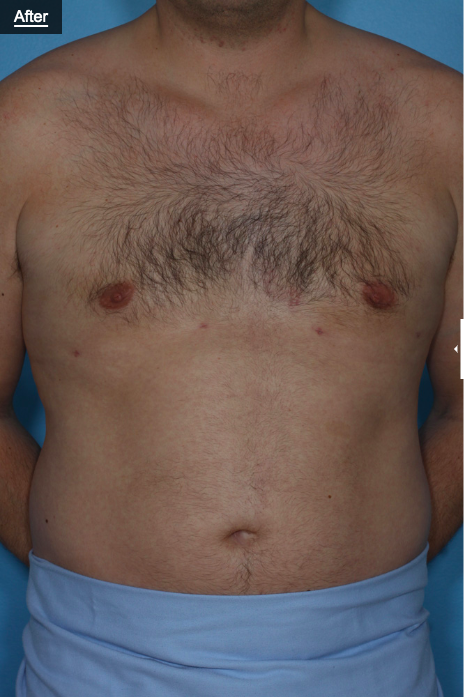Male Breast Reduction
Information
Male Breast Reduction
Case #1 Before & After
Male Breast Reduction
Case #2 Before & After
Background:
Enlarged male breasts known as gynecoomastia can be reduced by liposuction and/or by cutting out excess glandular tissue. This condition is far more common than many realize. Estimates of the number of men affected by gynecomastia vary widely (some estimates are as high as 40%). Although certain drugs (anabolic steroids, medications containing estrogen, alcohol, marijuana, etc.) and medical problems (cancer, impaired liver function, etc.) may cause or contribute to male breast enlargement, it is likely that a large percentage of cases stem from unknown sources.
Technique:
The procedure for male breast reduction takes an average of two hours, using general or local anesthesia. If excessive glandular tissue, fat and skin is present, it will be excised. Surgery may be performed alone or in conjunction with liposuction (where the suction device will typically be inserted through the existing incisions). For the removal of excess fatty tissue alone, liposuction should be all that is needed; in such cases, scars may be visible.
Benefits:
- Results are permanent (although subsequent obesity can create a gynecomastia-like effect).
- Firmer, flatter, more contoured chest.
- Significant boost in self-confidence.
- Return to work in one week, unless strenuous activities are involved.
Other Considerations:
- Some postoperative bruising, swelling, burning sensation. Numbness or lack of sensation could last up to a year.
- Infrequent complications may include infection, skin damage, fluid accumulation, bleeding, scarring or pigment changes.
- Patient will wear an elastic pressure garment for 3-6 weeks.
- Must avoid exposing scarred area to the sun for at least 6 months.
- Surgery may be discouraged for overweight men who have not first tried an exercise/diet regimen. Postoperative asymmetry, while rare, is possible; a second procedure may be needed to remove additional tissue.









